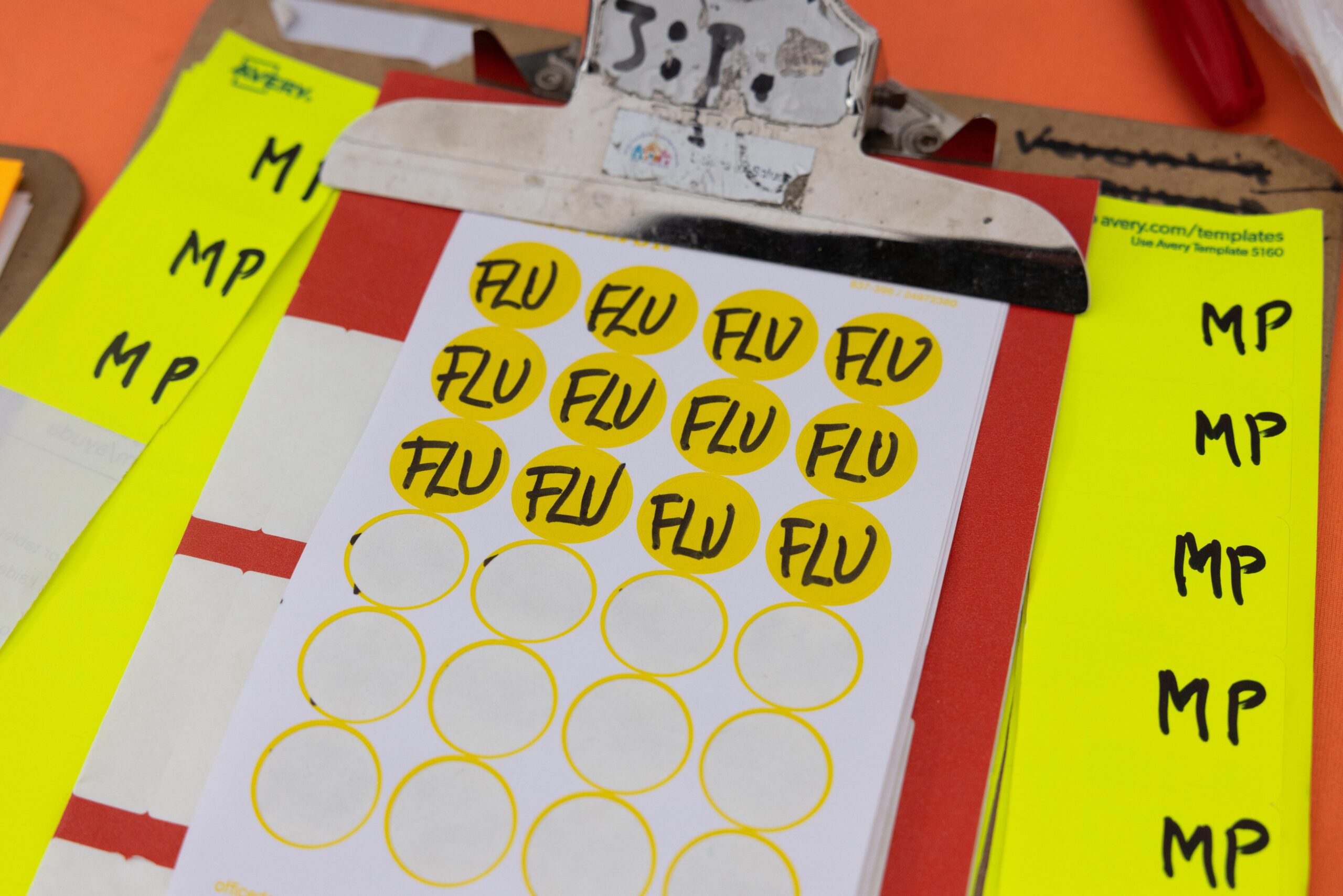Winter flu season is back with a vengeance this year, except this time, it’s not just one disease causing a surge in illnesses and hospitalizations—it’s three.
Dubbed a “tripledemic” by public health officials, San Francisco and cities across the country are getting hit by a triple-whammy of respiratory illnesses: common influenza, respiratory syncytial virus (RSV) and Covid.
Two years of pandemic-related restrictions and heightened hypochondria should have prepared the nation for the recent surge in winter illnesses, but health officials say that hospital beds are filling up at an alarming rate, influenza death counts are rising and younger children are falling seriously ill with RSV.
Covid has now been replaced by influenza and other respiratory illnesses as the most deadly and prevalent disease circulating through the state. And in San Francisco, physicians at numerous local hospitals report seeing fewer serious Covid illnesses and a higher number of patients with serious respiratory illnesses like RSV and influenza.
Here’s how the tripledemic is affecting San Francisco, Northern California and the rest of the state, by the numbers.
Hospitals Nearing Capacity
Hospital beds in San Francisco are starting to fill up with more respiratory cases, with some nearing full capacity. The California Pacific Medical Center on Van Ness Avenue, for example, reportedly has just one ICU bed left as of Dec. 19.
But Covid patients are not the only ones driving a surge in local hospitalizations. Hospitals across the city and Northern California region are reporting higher rates of influenza and RSV-related admissions than in previous years, with the surge of cases starting a few weeks earlier than usual. This trend is clearly visible in data from Kaiser Permanente hospitals.
Hospitals in Northern California are reporting rates of influenza-related admissions higher than they have been since 2015. Influenza admissions are slowing, however, and declined in the early weeks of December at Kaiser Permanente.
Covid hospitalizations in San Francisco are starting to rise again, mirroring winter surge patterns seen in previous years. ICU hospitalizations for Covid, however, remain relatively low and have yet to peak at the same rate as general non-ICU hospitalizations.
Not Only a Concern for Seniors
Adults over 65 years old are historically the demographic most at risk of serious illness during winter flu season. While this remains true in the 2022-23 flu season, RSV affected younger Californians at a much higher rate.
Health experts say the surge among younger people can be attributed to the pandemic: As schools closed and people masked up in public, children were not as exposed to the normal slew of respiratory viruses, and never built up enough immunity to fight off serious illness.
As for Covid, the majority of positive cases are now showing up in middle-aged individuals, though individuals over age 70 still comprise the largest share of Covid deaths.
Though RSV is sending more children to the hospitals than any other virus, there are no reported RSV-related deaths to date for individuals under 65.
How Will the Rest of Flu Season Pan Out?
The November spike in RSV and influenza-related hospitalizations concerned many public health officials, especially since the surges affected younger individuals at unprecedented rates and started months before an expected January disease surge. Yet, the latest CDC data shows signs that its spread may be slowing.
Influenza, influenza-like illnesses and RSV pathogens detected at California laboratories all decreased over the past three weeks, with RSV detection dropping from 13.5% on Nov. 22 to 8.2% by Dec. 6. And updated sewage data shows that the prevalence of Covid matter in SF wastewater is starting to decline from its November peak.
Public health experts warn that San Francisco is not yet out of the woods, however, encouraging locals to approach the coming months with some caution. Flu season normally hits hardest in January and February, and local health experts say it’s hard to tell if the recent drop in respiratory illnesses will last.
Nonetheless, SF beat back not only Covid but MPX (formerly known as “monkeypox”) this year, wrapping up 2022 with fewer cases of both, and with pandemic-era restrictions largely lifted. The city reported virtually no new MPX cases over the past two months, and its current Covid spike of roughly 200 cases per day comes nowhere near the 2021-22 flu season peak, when SF saw roughly 2,300 new cases per day.
Flu shots and Covid vaccines and boosters are still available (and still effective), and the CDC encourages frequent handwashing and the return of masking in public spaces.
Covid bivalent boosters and influenza shots are available for everyone aged 6 months and older. Click here for a map of where to get a bivalent booster in San Francisco.
